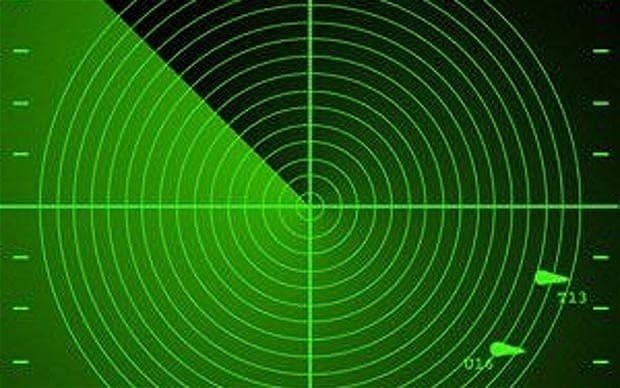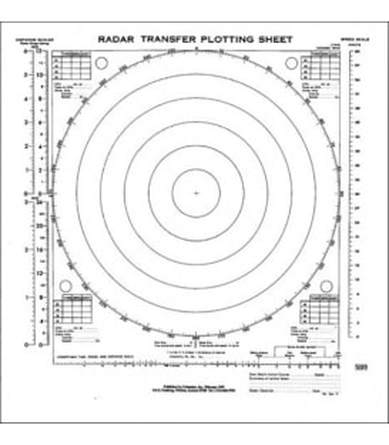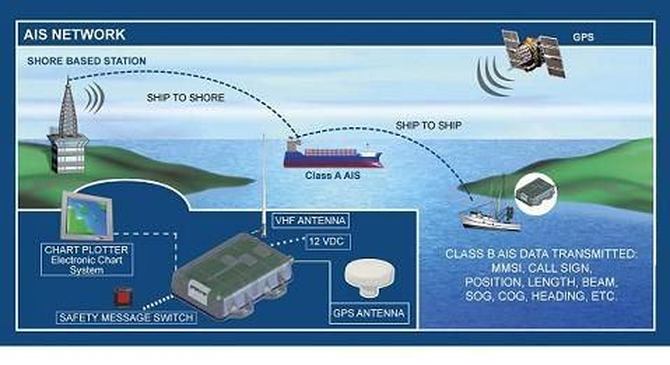|
Who’s there? Hopefully not another boat, but the risk of collision and allision are always present. If you plan to operate in constricted waters, areas of high traffic, and/or reduced visibility (night time or fog), you’d be well advised in investing in a good Radar…and knowing how to use it. Radar is now common vernacular, but it used to be an acronym for RAdio Detection And Ranging when it was developed in the 1940s. The radar emits a pulse of high frequency radio waves in a narrow beam that propagates out from the transceiver until it reflects back off some object (another vessel, shoreline, a buoy, etc.). The reflected pulse is then received by the transceiver and, by calculating travel time for the pulse, a range to the detected object can be determined. In order to do this in all direction the radar antenna (transceiver) rotates. Typically it will transmit for a few thousandths of a second and then listen for reflections for up to several seconds (this depends on what range scale you have the radar set to). This data is processed and displayed in a planar form with your vessel at the center of the screen. By observing this, an operator can track nearby vessels, where they are, how quickly they're traveling, and where they're heading. As an aside, the wives tale about carrots being good for your night vision is a result of the advent of radar, or so I was told. During WWII British fighter planes were equipped with radar and were able to devastate German bombing raids at night. In order to cover up the fact that they were using radar to find and destroy the German aircraft, they attributed their success at night to feeding their pilots a diet of carrots to improve their eyesight in the dark. In the olden days, you would plot vessels on scope face plotters, but that has gone by the wayside with the advent of ARPA. You can still manually track vessels by transfer plotting and it’s a fun exercise (if you like vector math and/or torturing Ensigns that don’t like vector mat). You can transfer data to a piece of paper (a transfer plotting sheet, like the one below). By plotting the initial position of a detected vessel and then a second position, say 6-minutes later to make the math easier, you can calculate his course, his speed, his relative motion in relation to you, and your CPA (Closest Point of Approach; e.i. how close you’re going to get to each other). With a bit more calculating, you can figure how you can change your course to get the CPA that you want. Of course, this is all cumbersome and can take a great deal of your attention that should be directed towards navigating your vessel. That’s why ARPA is so great. An ARPA equipped radar will allow you to acquire and track targets and will automatically calculate all that information for you. You acquire a target, give it a few minutes to get good vectors, and it will display that target’s distance, bearing, speed, course, CPA, time to CPA, and a variety of other information. It will also automatically alert you if a tracked target is going to be within a lower bound for CPA, like anything with a CPA of less than 1-nm. By going into trial maneuver you can also see what effect changing your course or speed will have. Watching a radar screen is a bit like playing a video game—except that the spots on the screen represent real vessels. AIS provides another great tool for identifying other vessels, and this data can be overlaid on most newer radars or chartplotters. The Automatic Identification System is essentially a civilianized version of the military’s friend-or-foe systems. If your vessel is equipped with AIS it takes your vessel data, including name, vessel type, length, beam, crew size, destination, position, course, speed, and a host of other pertinent information and broadcasts it via VHF. Another vessel equipped with AIS can receive this information. As someone that was sailing during the introduction of AIS, let me say that it is a huge leap forward. I can now know exactly who I am trying to raise on the VHF and use their vessel name instead of having to call “the vessel 2-nm south of Point No-Point on course 260 at a speed of 12-kts.” If you want to get an idea of what AIS data is like, there are several online viewers that are receiving AIS data in near real time and posting it on the internet; the one I use fairly often is linked below: MarineTraffic: Global Ship Tracking Intelligence There are three options when it comes to AIS; an AIS Class A transceiver, an AIS Class B transceiver, or an AIS receiver. There are differences in the way Class A and B transmit their messages, but that might be getting a little too technical. AIS Class A is the system on commercial vessels that are governed by SOLAS (Safety Of Life At Sea), it must have an integrated display, transmit at 12.5-W, interface capability with multiple systems, and offer several other features and functions. A Class B transmits at 2-W and has no requirements for an integrated display or interfacing with other systems. An AIS receiver is just that, a receive only unit that will not transmit any of your information; so you will receive and be able to display the information of other vessels, but they will not get your information, which means they aren’t as likely to see you. On a recreational vessel, I would opt for the AIS Class B, which you should be able to find for under $1000. A good ARPA equipped radar will likely run you considerably more; I haven’t priced one recently, but I’d bet on $10k. However, the best equipment in the world won’t help unless you know how to use it; so I think the first order of business would be to look at options for training courses.
If you plan to operate at night or in reduced visibility you should have radar with ARPA (Automatic Radar Plotting Aid) functionality. Many radars now have the ability to integrate AIS (Automatic Identification System) and chart data on their displays, which is a very helpful piece of technology. The most important thing is that you know how to use your Radar. There should be classes for radar and ARPA offered in your area and if you’ve never used either, it’s well worth the investment to get the training. I would suggest going through a training course prior to purchasing a radar/ARPA, then go into a reputable marine dealer and play with the floor models to see which one you find easiest to use and equipped with all the features you want. Until next time, here's wishing you fair winds and following seas.
0 Comments
Leave a Reply. |
AuthorBrent Pounds has over a decade of experience in the maritime industry and has been involved in recreations boating since he was a child. See the About section for more detailed information. Archives
October 2016
Categories
All
|



 RSS Feed
RSS Feed